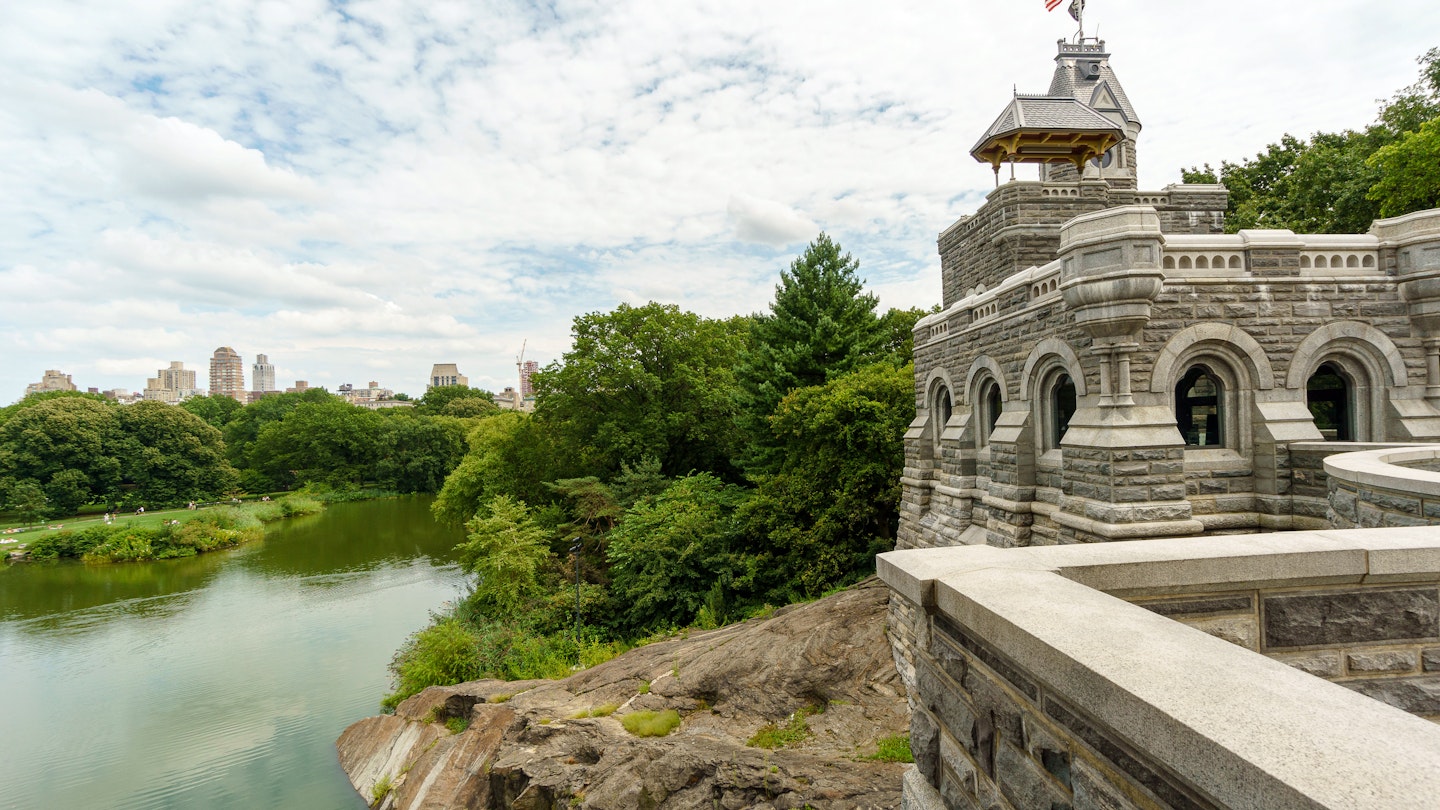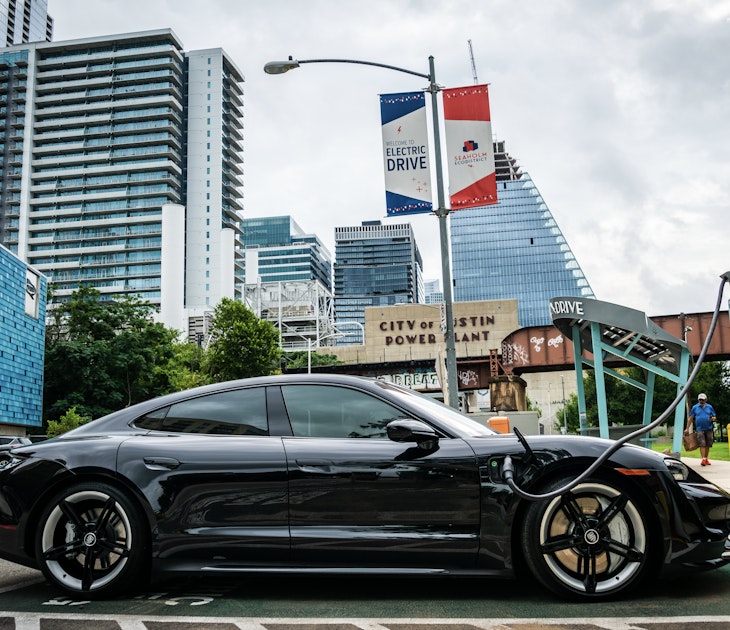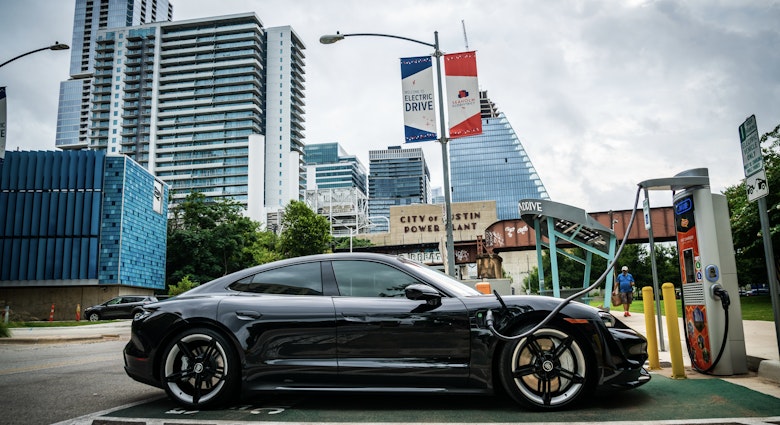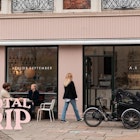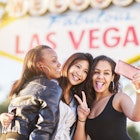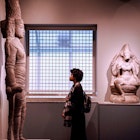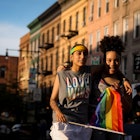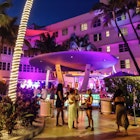Welcome to The Detour, where we show you the hidden corners of some of the world’s most visited places.
The first public park in the nation, Central Park is still where New Yorkers go to get a breath of fresh air and recharge. And they’re not alone: thanks to its varied terrain – lush meadows, exposed bedrock, wild woodlands, lakes, gardens and a reservoir – the park bursts with biodiversity, including rare flora and fauna. And, much like the city that surrounds it, it hums with history and culture. The park is known for its outdoor theater, charming eateries, ice skating rink, Reservoir running track, a tribute to John Lennon and Alice in Wonderland statue – and endless attractions that any traveler will want to see.
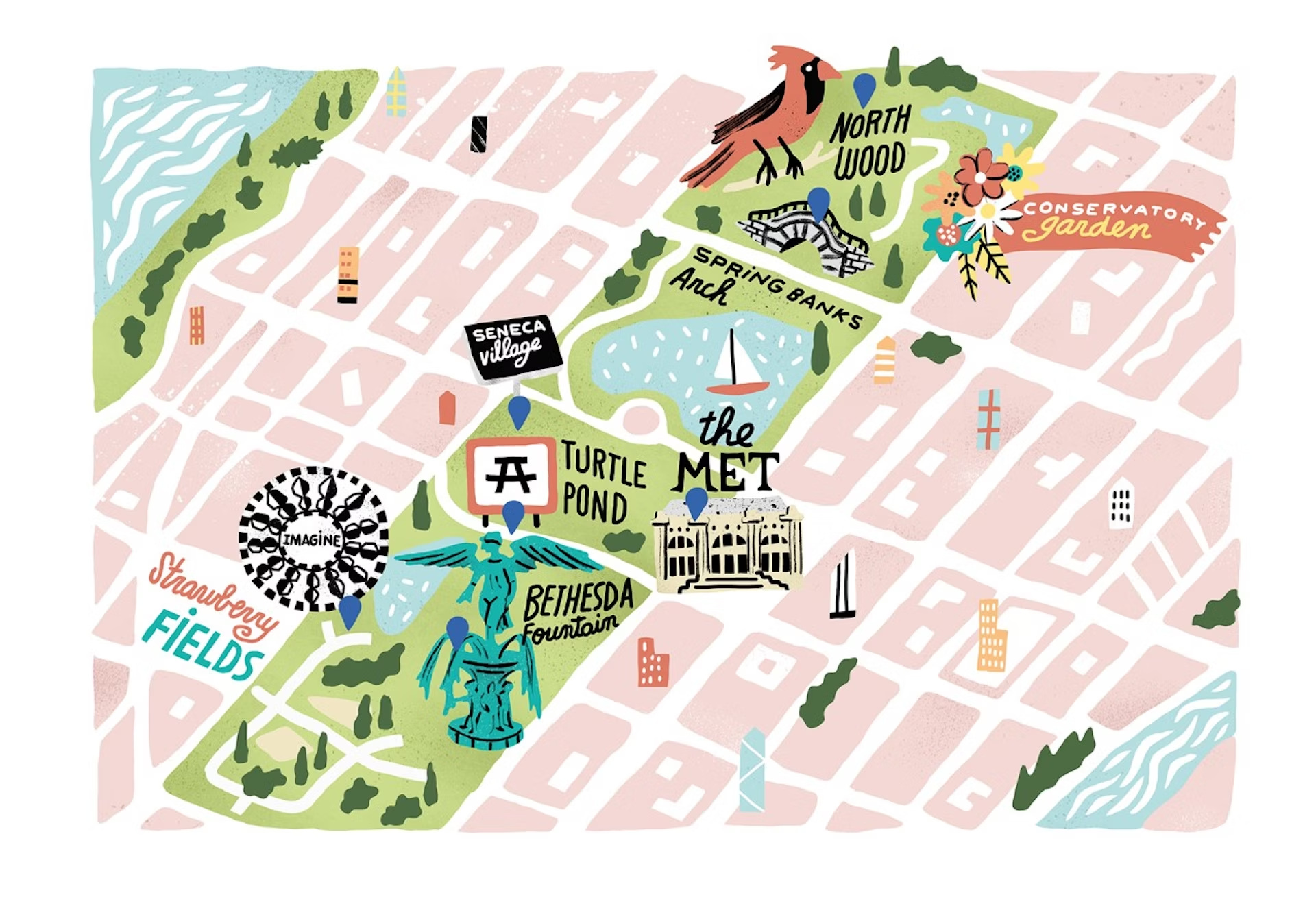
But once you’ve seen your own personal highlights, it’s worth finding some extra time to explore. Here’s how you can take a detour in Central Park, whether you have just one hour, three, five or all day.
1-hour detour
Your first visit to Central Park will make it clear – the park is unbelievably expansive. If you find yourself at the famed Bethesda Fountain, an iconic meeting and people-watching spot, you can still manage to sneak some exploration into just an hour. Here’s how to do it.
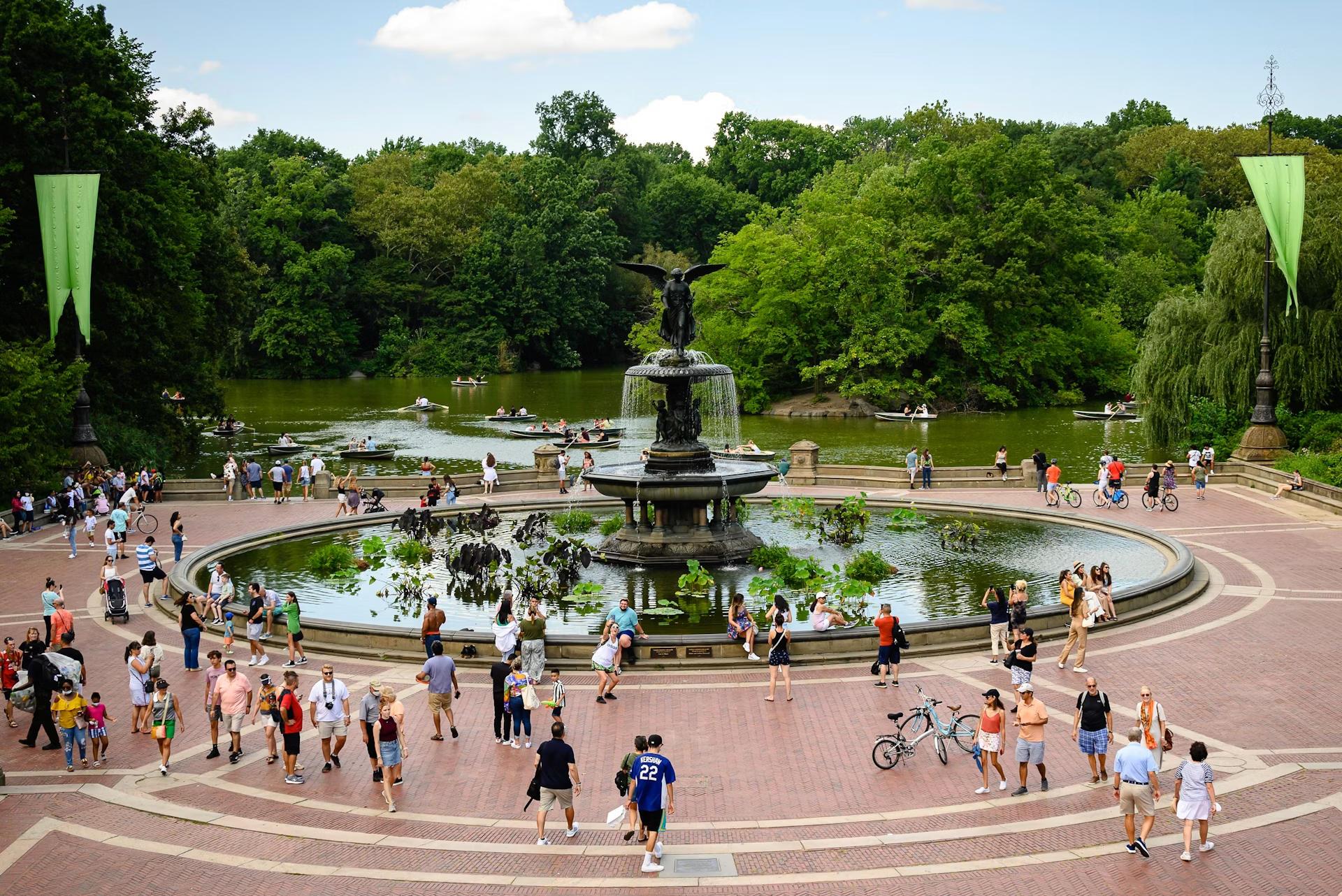
Relax in a semi-secret garden
In about 40 minutes you can walk to the Conservatory Garden, the most formal and stunning of Central Park’s gardens. It’s tucked away on six acres between E 104th & 106th streets.
Open daily from 8am to 8pm in summer, the elegant, European-styled garden, with its beautiful flowers and fountains and magnificent gated entrance (Vanderbilt Gate once belonged to the largest single-family house in New York City), feels like Central Park’s best-kept secret – and is an excellent place to enjoy a book or breakfast, or rest between museums.
16 things you have to do in New York City
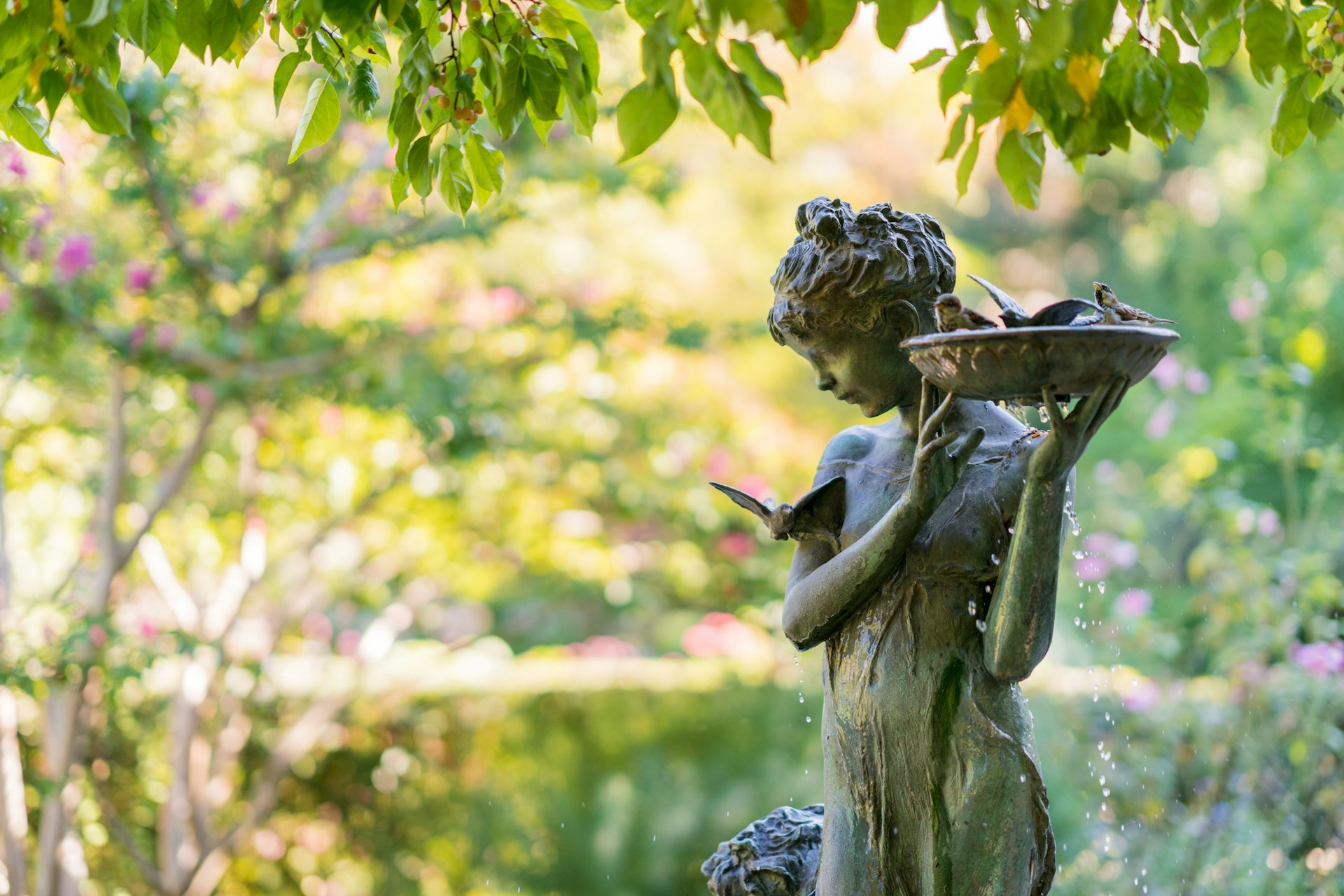
It’s directly across from El Museo del Barrio and the Museum of the City of New York at the north end of Fifth Avenue’s Museum Mile – so you can keep the exploration going if you’re so inclined.
Hear the sounds of Central Park
The New York Philharmonic has plans to return to its shows the park, but no dates have been announced. However, you can download the Ellen Reid SOUNDWALK app – a free immersive audio experience that harmonizes with the park’s landscapes and attractions, and was created by the Philharmonic during the pandemic. That way, you can explore the park at your leisure with an epic soundtrack. Try it on your walk to the Conservatory Garden.
Recreate your top pop culture moments in Central Park
While the Strawberry Fields – about a 10-minute walk from Bethesda Fountain – is the most famous musical landmark, there are over 100 music “pop spots” (mostly concentrated in the southern half of the park) according to Bob Egan, a human encyclopedia of NYC pop and art who publishes a map and has a website called PopSpots.
Instead of just imagining these cultural moments, re-enact them. You can grab some friends and recreate famous album covers around Central Park, including: Simon & Garfunkel’s Greatest Hits (east side of the Reservoir), John Lennon & Yoko Ono’s Watching the Wheels (72nd & CPW) and The Rascals: The Essentials (Bethesda Fountain).
Or be the artist: sign up for an art class – like 92Y’s plein air watercolor painting class in Central Park – join a meet-up or bring your own sketch pad. Central Park is the best muse.
Best things to do on Roosevelt Island in New York City
3-hour detour
More time means more adventures, and three hours will provide ample time to indulge in some art or some nature.
Experience the arts and culture
You’ve likely heard of the free and fabulous Shakespeare in the Park, which has taken place annually at Delacorte Theater since 1961. But “Shakespeare in the Fields” (as it’s colloquially/unofficially known) – performed by a theatrical group (NY Classical Theatre) that takes crowds wandering through the bushes in the park’s remote northwestern corner – is more rustic and interactive, though just as free (you still need a ticket).
Go birdwatching
Bring your binoculars – Central Park is one of the best places to go bird watching; not only in New York City, but in the entire US.
“Scientists have a term called ‘the Central Park effect’. If you’re a bird and see a big green patch of land boxed in by concrete and large puddle of water, you know it’s going to be a good rest stop,” explains climate scientist and wildlife photographer Alexander More. However, beyond the usual birds, he was a firsthand witness to the rare Snowy Owl, which visited the park for the first time in 130 years (likely due to climate change), along with other species like warblers, tanagers and hawks.
Why birding is taking flight with a new generation
That’s because this ‘rest stop’ is situated along the Atlantic Flyway (a major migratory route for birds between North and South America), which is busiest during the first two weeks of May, when birds fly north, and from August through September when birds start returning south.
Within the park, the best locations for spotting birds (and meeting fellow birders – a chirpy, affable and eclectic crew) are in the far northern sections of the park – North Woods, Ravine and the Ramble.
5-hour detour
Five hours is enough time to see the lesser-visited side of Central Park – whether that’s foraging for your own food, strolling through nature or learning the integral history of Seneca Village.
Try foraging
Central Park is home to over 100 medicinal and edible plants, from the American persimmon (Diospyros virginiana) to Kentucky coffee tree (Gymnocladus dioicus), according to “Wildman” Steve Brill. Brill is the most renowned foraging guide in the tri-state area who leads half-day tours across NYC’s parks and beyond – sign up for a totally new way of exploring this urban park.
Summit One Vanderbilt: Why I loved this new -- and definitely different -- NYC observatory
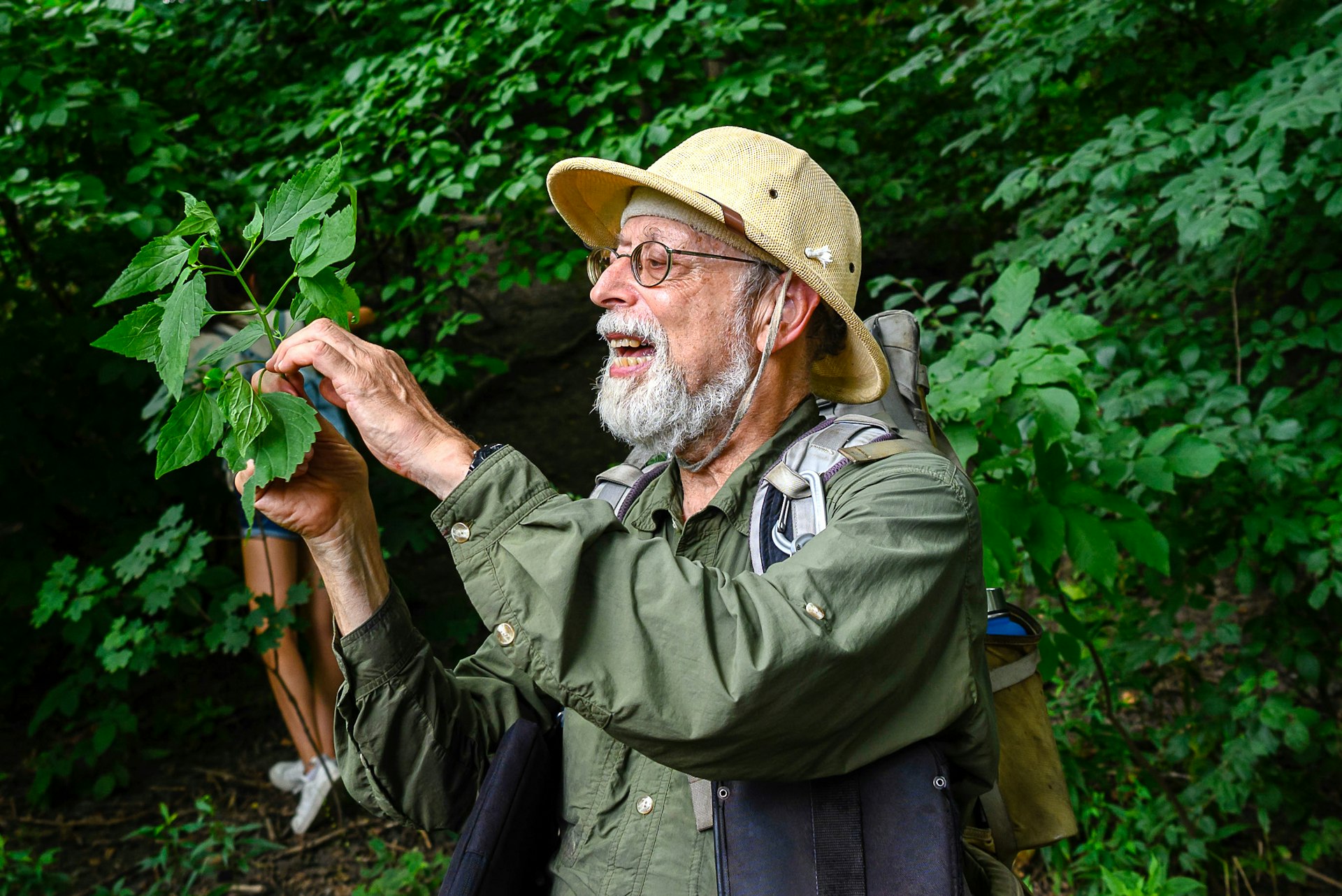
A vegan and self-taught botanist since 1990, he’s passionate about disseminating everything he’s learned and educating us on the diversity of wild plants and responsible foraging. Steve Brill first made headlines when he got arrested for eating a dandelion in Central Park in 1986. Charges were soon dropped and he hasn’t had a problem since.
No single tour is the same. Summer is best for berries - think black raspberries, mulberries, juneberries and wineberries - while fall is best for mushrooms and nuts. His tours are hyper-local: “the people who live in Brooklyn come to Prospect Park, while the people in Manhattan come to Central Park”. They are also hands-on – you keep what you pick – and humorous, as he knows just as many puns as plants. While a $20 donation is suggested per adult, tours are free to those who can’t afford them. You can also download his Wild Edibles app (the ‘Lite Version’ is free). Worried about sustainability? Brill has been picking in the same spots across Central Park for over 39 years, and there’s just as much there now as there was in 1982.
Explore the quieter north end
Instead of entering Central Park from the southern end, where most tourists go, begin your exploration in Harlem to learn about the park’s lesser-known landscapes and history.
For the grandest entrance of all, make your way from the memorial to the jazz legend Duke Ellington, in a roundabout at Central Park’s northeastern corner (E 110th and Fifth Ave), to the ornate Vanderbilt Gate, which was designed in France.
New York City's 10 best neighborhoods for shopping
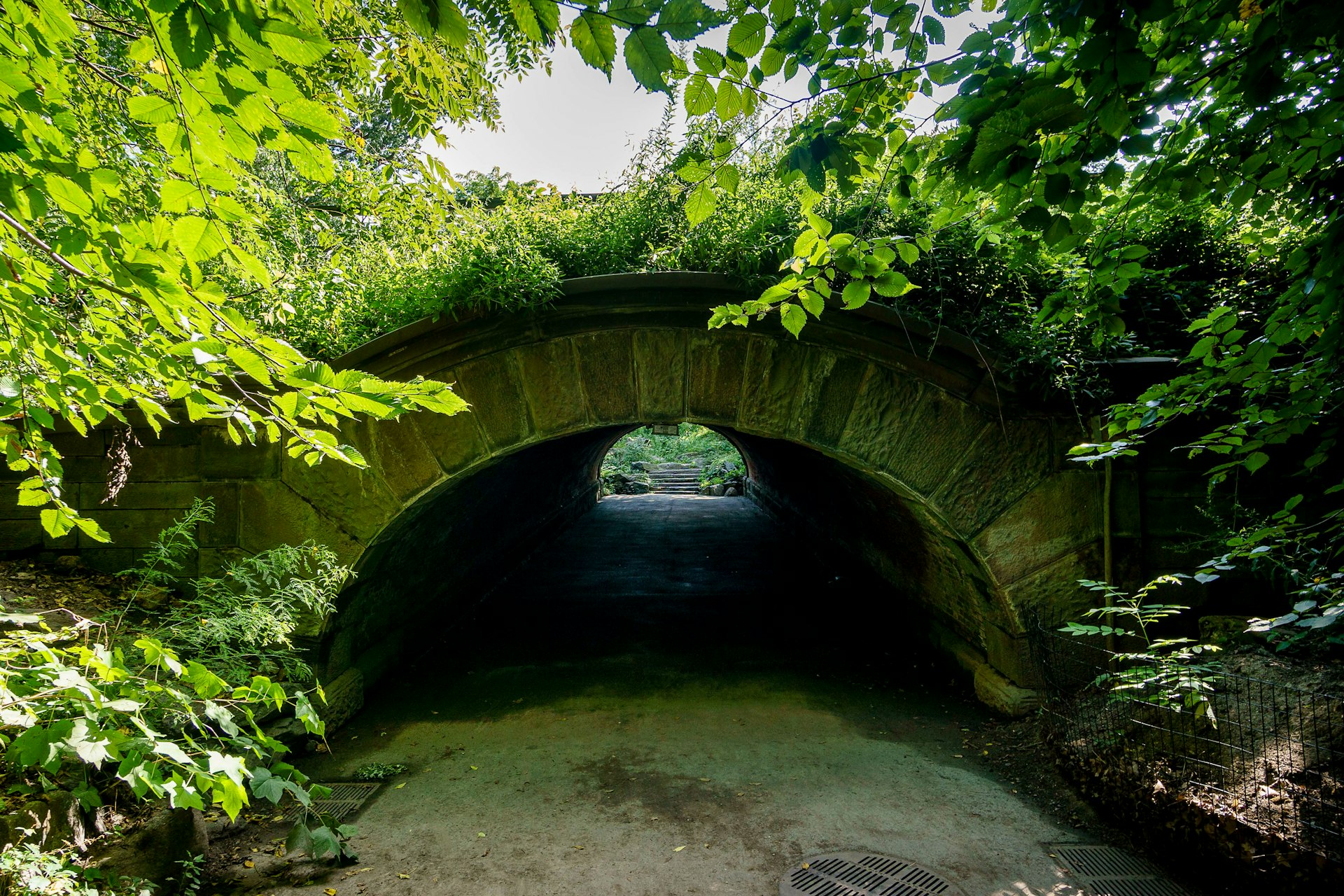
After relaxing in the beautiful Conservatory Garden, which also happens to be one of the cheapest places to get married in New York City (see 1-hour Detour for more details), take the E 102nd entrance and walk west, passing the baseball fields, till you reach the lesser-known Springbanks Arch, a portal to another world. Sounds of gushing spring water usher you into the wilderness that is the Ravine, where the only skyscrapers you can see are tall oak, elms and maple trees.
Wandering along the narrow waterway, known as the Loch, look for meditative waterfalls (all designed by the park’s original designers Frederick Law Olmsted and Calvert B. Vaux) and wildlife, like snapping turtles and hawks. Continue till you reach the 40-acre North Woods, the largest of the Park’s three woodland landscapes, widely popular among bird watchers and naturalists. After taking yourself on a free self-guided tour, bid adieu to the area labeled the “Adirondacks” via the rustic Huddlestone Arch, made entirely of massive boulders, which thrusts you out and returns you to “civilization”. You’ll emerge at the eerily empty 1960s modernist Lasker Rink and Pool (soon to be redeveloped into the $150-million Harlem Meer Outdoor Center, set to open in 2024) overlooking Harlem Meer, which, at 11 acres, is the second largest manmade body of water in the park and popular for catch-and-release fishing.
Make your way west to the Great Hill, one of the highest natural points in Central Park, and continue south for twenty blocks along the park’s west side, passing the tennis courts and Reservoir (known for its scenic running track and skyline views, it’s literally breathtaking), till you reach one of the most significant historical sites in the entire park: Seneca Village.
Learn the park's important history
Before Central Park was established in 1856, the grassy stretch of lawn between what is now W 82nd and 89th Streets (across from the American Museum of Natural History) was home to New York’s first free and prosperous African-American settlement. Founded thirty years prior in 1825, Seneca Village was a refuge from the chaos and grit of the city downtown – until an 1853 New York State law uprooted its residents and razed the village for the creation of Central Park.
To counter the city’s ‘unhealthy conditions’, the law designated that 775 acres of land would become the nation’s first landscaped public park. While this allowed the government to acquire private land for public use through eminent domain – a common practice back then – compensating landowners in the process, many of the 1600 displaced were outraged, claiming their land was undervalued, according to the Conservancy.
8 of the best vegan restaurants in NYC that are a fraction of the price of Eleven Madison Park

As you wander the grassy knolls and winding paved and mulch paths under the shade of billowing trees, passing people reclining on park benches and children frolicking at playgrounds, it’s hard to imagine today that this barely landscaped patch of green between Central Park West and present-day Arthur Ross Pinetum (mid-Park between 84th and 86th Streets), west of the Great Lawn, was once part of New York City’s grid system, home to a Black middle-class utopia of 225 property-owning African-Americans (and other blue-collared peoples), with houses made from wood panels, stone and brick, three vibrant churches, a two-storey brick school for African-American students, burial grounds, stables and residential gardens – not to mention a massive 31-acre receiving reservoir with 30-ft-high walls where the Great Lawn and Turtle Pond are today.
While it seems like Seneca Village was all but erased to create Central Park, a 2011 archeological dig showed otherwise, uncovering a significant amount of remains, from blocks of stones belonging to the reservoir and the corner of a foundation, to personal artifacts like shoes, buttons, a toothbrush and a hair comb, thanks to the help of ground-penetrating radar to pinpoint locations. In 2019, after nearly a decade of research, Central Park Conservancy installed its first interpretive signage initiative commemorating Seneca Village, which you can experience today.
The same year, as an attempt to rectify historical imbalance through art, Mayor De Blasio announced plans to make a monument to the Lyons family – early Seneca Village property owners who were exemplary abolitionists and equal rights advocates. (While there’s no update since the announcement, the proposed location is actually at Central Park’s W 106th Street entrance, not the former Seneca Village site.)
To learn more about Seneca Village, look for interpretive signs that dot the W 80s, take a guided tour (or this 30-min virtual walking tour), and/or consult the many resources available on Central Park’s website. Research is ongoing.
Extend Black History Month celebrations with these Afrofuturism events in NYC
All-day detour
Have an entire day to dedicate to your Central Park explorations? Try any of the above experiences – and check out these additional adventures to round out your day.
Stop for a picnic
If you want to spend the entire day exploring, it’s the perfect time to pack a picnic. And Central Park has every kind of setting you could wish for, from grassy meadows to secluded waterfalls, picturesque bridges and lakes to panoramic outcroppings.
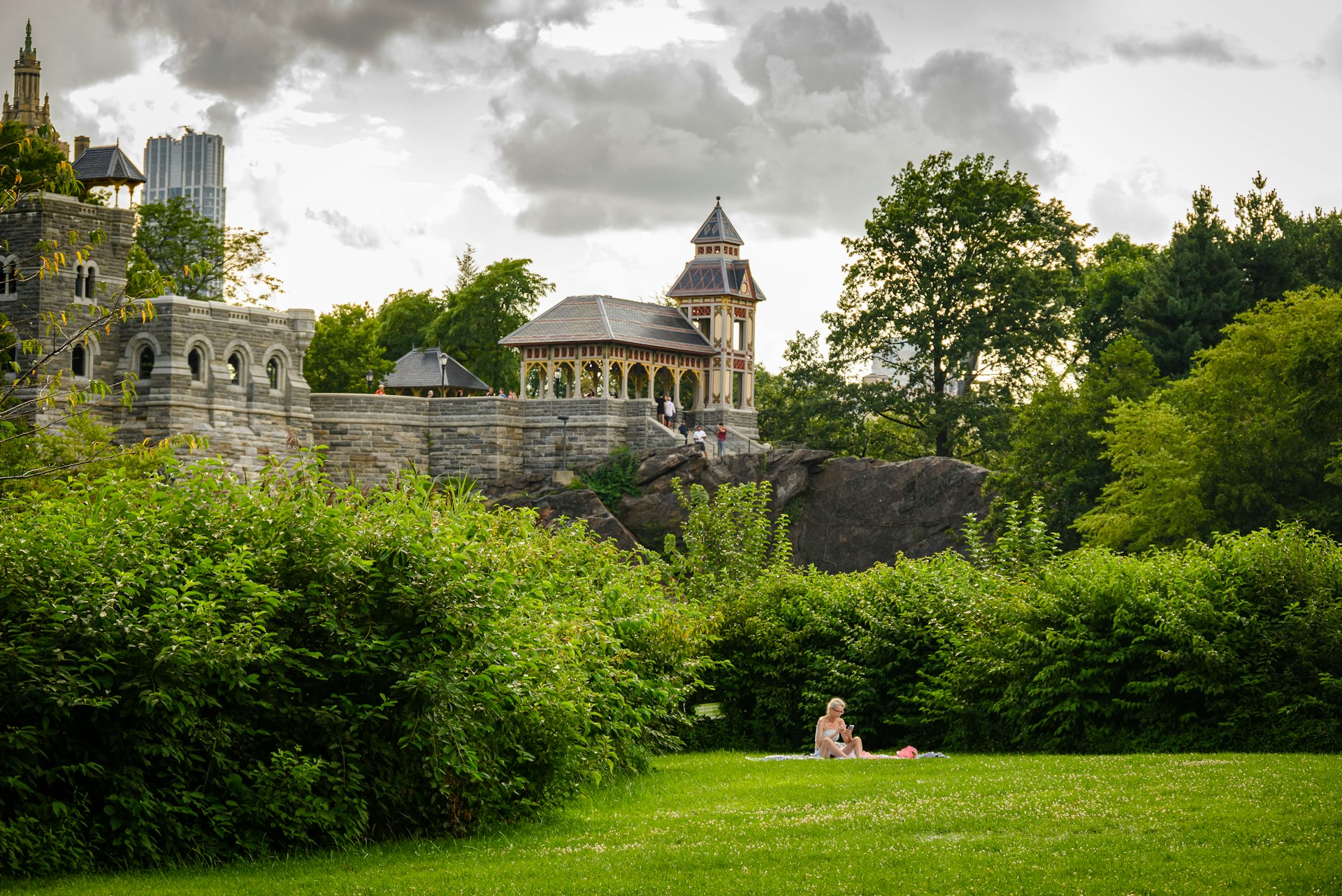
“My favorite spot in all of Manhattan,” says pop-up picnic planner Nikita Paul (who started PicNik NYC during the pandemic), “is right in front of Belvedere Castle and Turtle Pond. Serene, calm and romantic, it has a fairytale feel despite being in the middle of a concrete jungle.” She also recommends Sheep Meadow (great for people watching), lakeside picnics at Cherry Hill next to Loeb Boathouse, Wollman Skating Rink off-season for the skyline views and Seneca Village for Juneteenth.
That said, any bedrock will do. Just bring a blanket and food, which you can grab before you enter (which you should grab before you enter since many of the concession stands were closed due to the pandemic) from Breads and Épicerie Boulud at Lincoln Center, Whole Foods at Columbus Circle or Bo’s Bagels in Harlem (which arguably makes the best bagels in NYC).
Who makes the best pizza - New York or Chicago?
See Central Park from another vantage point
To fully understand the scope of the park, you have to see it from above. Once you’ve explored on the ground, go take in one of the best aerial views from the Met’s Roof Garden. Another is from the Edge at Hudson Yards – the highest observation deck in the Western Hemisphere – but it’s not free (tickets are from $36/adult). The same goes for a number of high-end restaurants and hotels, i.e. the Mandarin Oriental at Columbus Circle (take the elevator up to see the lobby views for free) and Park Lane Hotel.
Visit nearby galleries and shops
Any of the nearby museums complement a trip to Central Park. Aside from the Met and Natural History Museum, it’s worth checking out some of the smaller, lesser-known galleries and museums, like Neue Galerie, New-York Historical Society, Asia Society, the Frick, El Museo and the Jewish Museum.
Take a quick trip to France
Nearby you can visit a stellar bilingual bookshop inside a former mansion: Albertine, the only place in the city devoted to selling French and English books. You have to go through security to enter because it’s technically part of France, but ne vous inquiétez pas: no passport is needed. It’s worth the trouble because the elegant hand-painted ceiling featuring constellations and planets on the second floor is, quite literally, out of this world.
Black Gotham walking tours will lead you through New York's untold history
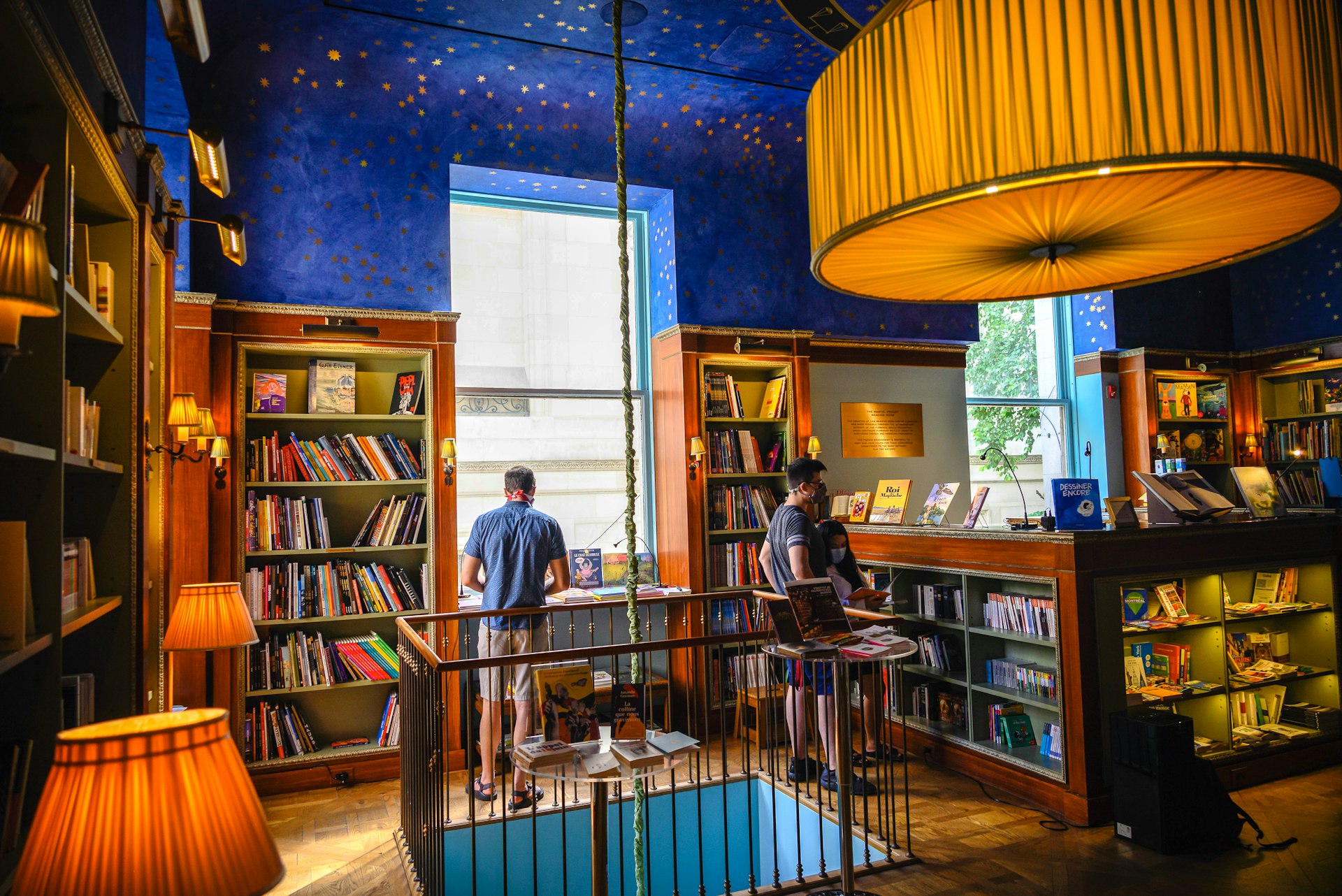
If you really want to feel like you’re in France (the full experience), pick up a fresh baguette by Richaud, a French actor turned baker (during the pandemic), who now uses the kitchen at Alain Ducasse’s upscale French bistro Benoit on W 55th, just 4 blocks from the park.
Explore New York beyond Central Park:
20 sometimes-free New York City attractions
The best 13 parks in New York City
New York City's 6 best running routes

